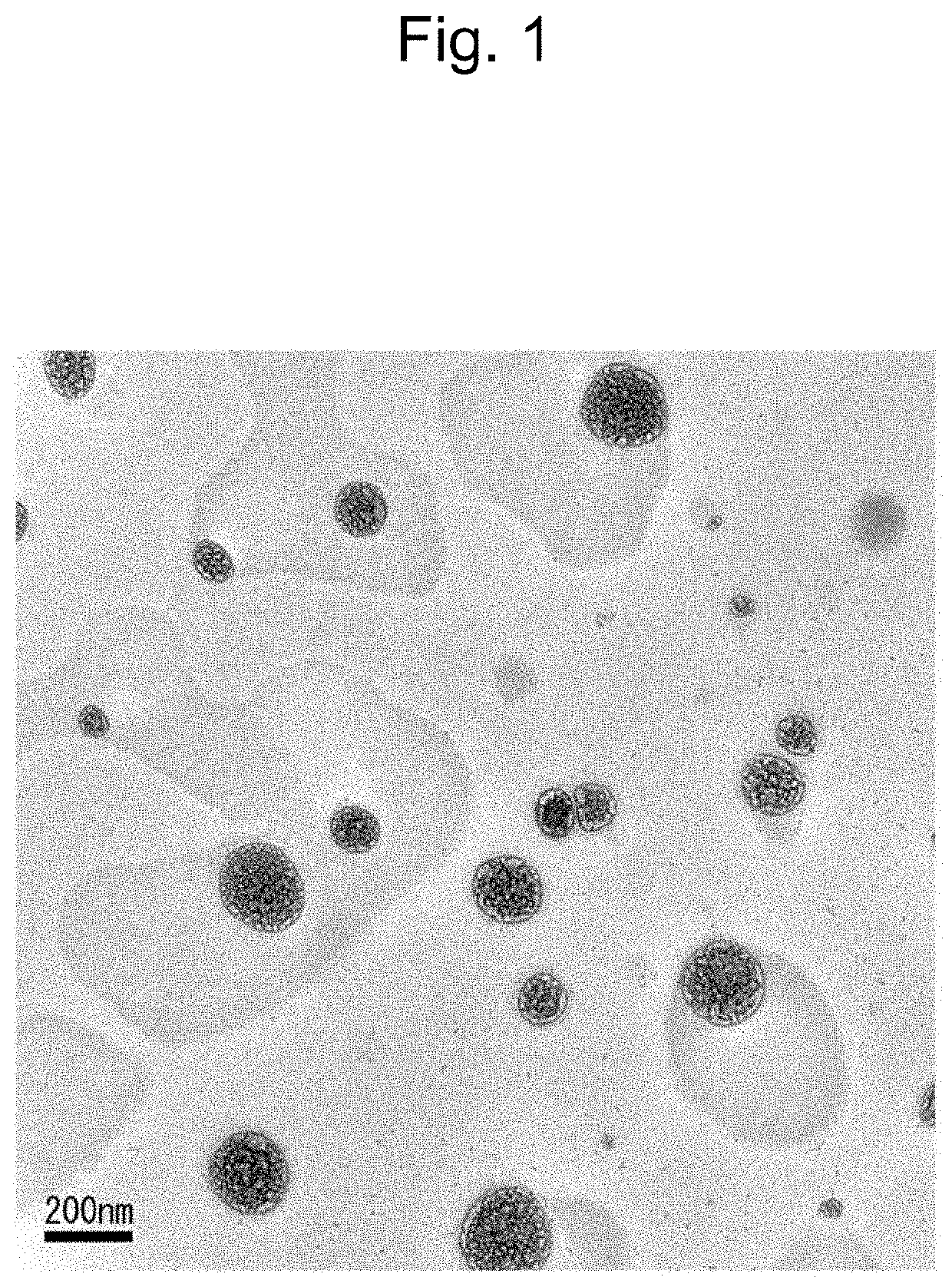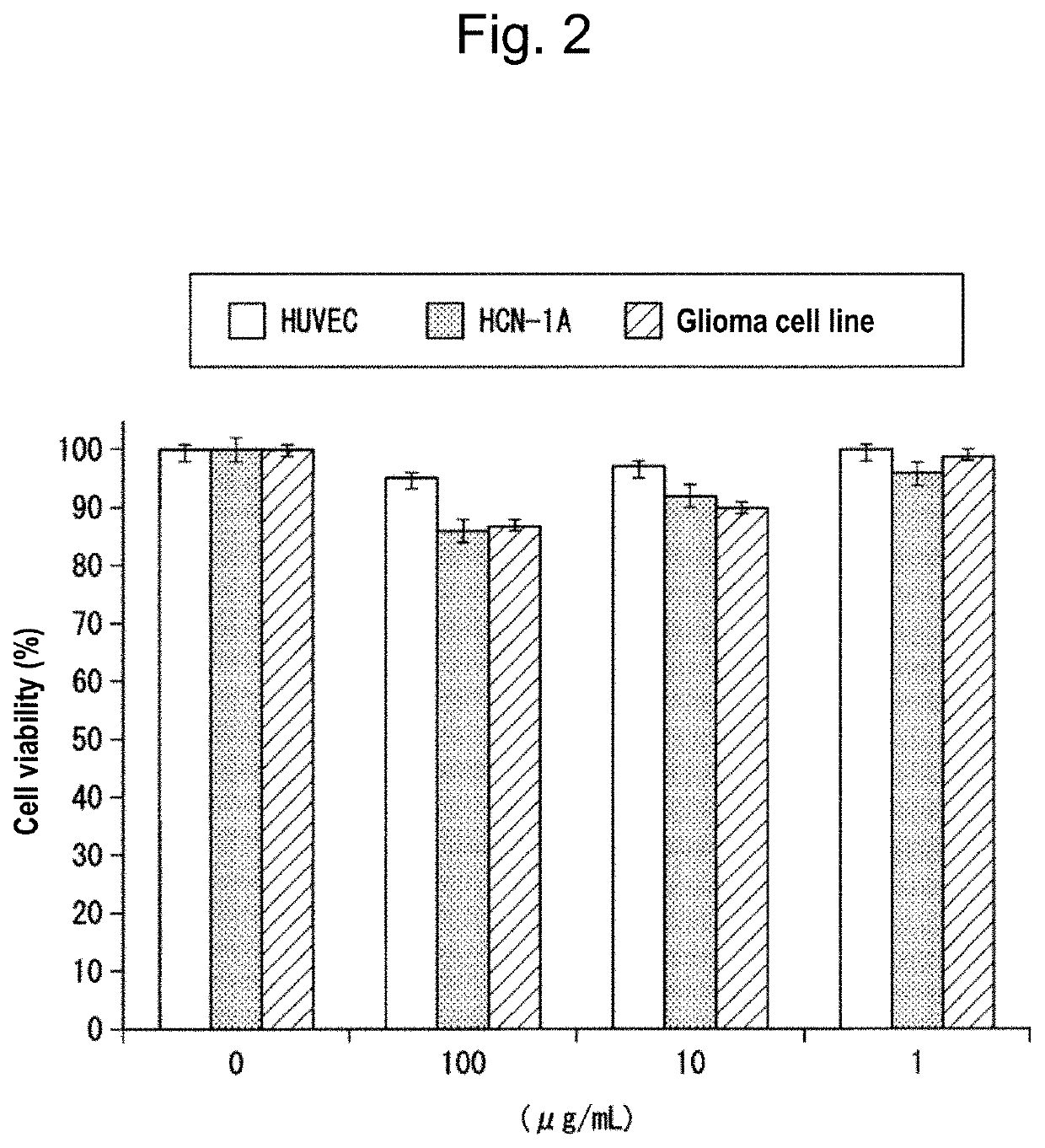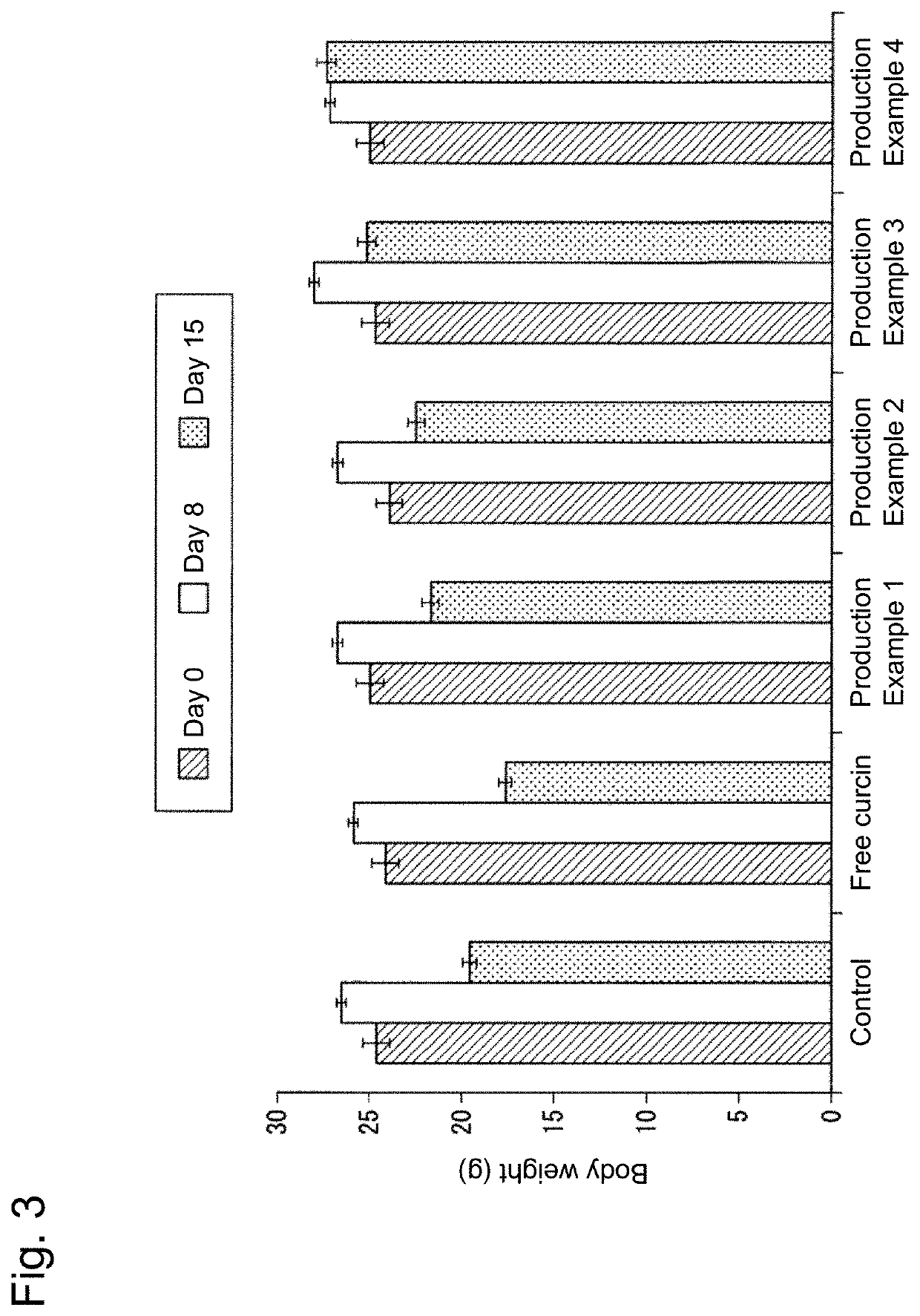RGD and transferrin nanoparticle composition
a technology of transferrin and nanoparticles, applied in the field of nanoparticle composition, can solve the problems of high mortality, success rate of chemotherapy, and almost all chemotherapeutic agents cannot overcome the inherent defense mechanism of the brain, and achieve the effect of low cytotoxicity
- Summary
- Abstract
- Description
- Claims
- Application Information
AI Technical Summary
Benefits of technology
Problems solved by technology
Method used
Image
Examples
example 1
Production Example 1
[0185]Nanoparticles were prepared by a modified method of lipid coacervation. 25 mg / mL (about 9.0×10−3 mol / L) of 1,2-distearoyl-sn-glycero-3-phosphoethanolamine-N-[amino(polyethylene glycol)-2000] (DSPE-PEG(2000) amine, Avanti Polar Lipids, Inc.), 25 mg / mL (about 8.8×10−2 mol / L) of stearic acid (Sigma-Aldrich Co., LLC.) and 25 g / mL (about 3.3×10−2 mol / L) of lecithin (phosphatidylcholine) (Sigma-Aldrich Co., LLC.) were dissolved in chloroform and desiccated overnight to form a thin film.
[0186]Next, a solution of curcin in phosphate buffered saline (PBS) (pH 7.4, 5.33 mg / mL) was added to the thin film, and then sonication was performed gently (at 43 kHz) for a few minutes (1 to 2 minutes) with a sonicator (AS ONE Corporation) to prepare a transparent and stable suspension. Subsequently, the suspension was centrifuged at 50,000 rpm for 30 minutes to pelletize nanoparticles (washing process). This washing process was repeated, thereby obtaining nanoparticles of Produ...
production example 2
(Preparation of RGD-Bound Curcin-Nanoparticles)
[0187]In the buffer solution, 1-ethyl-3-[3-dimentylaminopropyl]carbodiimide hydrochloride (EDC) (Sigma-Aldrich Co., LLC.) and N-hydroxysuccinimide (NHS) (Sigma-Aldrich Co., LLC.) were added to 2 mg of a tripeptide consisting of an amino acid sequence of arginine-glycine-aspartic acid (RGD tripeptide, Sigma-Aldrich Co., LLC.), and they were reacted and activated overnight at 4° C. by use of a tube rotator.
[0188]Next, the activated RGD tripeptide was reacted at 4° C. for 4 hours or longer (overnight) with added nanoparticles of Production Example 1 (10 mg). Subsequently, the suspension was centrifuged at 50,000 rpm to pelletize nanoparticles, thereby obtaining nanoparticles of Production Example 2 (RGD-bound curcin-nanoparticles).
production example 3
(Preparation of Transferrin-Bound Curcin-Nanoparticles)
[0189]In the buffer solution, EDC and NHS were added to 2 mg of transferrin (Sigma-Aldrich Co., LLC.), and they were reacted and activated overnight at 4° C. by use of a tube rotator.
[0190]Next, the activated transferrin was reacted at 4° C. for 4 hours or longer (overnight) with added nanoparticles of Production Example 1 (10 mg). Subsequently, the suspension was centrifuged at 50,000 rpm to pelletize nanoparticles, thereby obtaining nanoparticles of Production Example 3 (transferrin-bound curcin-nanoparticles).
PUM
| Property | Measurement | Unit |
|---|---|---|
| melting point | aaaaa | aaaaa |
| diameter | aaaaa | aaaaa |
| diameter | aaaaa | aaaaa |
Abstract
Description
Claims
Application Information
 Login to View More
Login to View More - R&D
- Intellectual Property
- Life Sciences
- Materials
- Tech Scout
- Unparalleled Data Quality
- Higher Quality Content
- 60% Fewer Hallucinations
Browse by: Latest US Patents, China's latest patents, Technical Efficacy Thesaurus, Application Domain, Technology Topic, Popular Technical Reports.
© 2025 PatSnap. All rights reserved.Legal|Privacy policy|Modern Slavery Act Transparency Statement|Sitemap|About US| Contact US: help@patsnap.com



